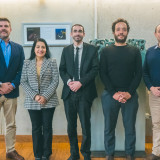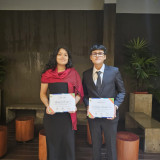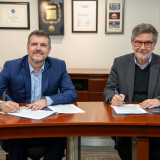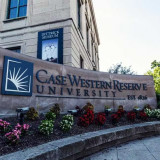Learn
About Us
The university that empowers ingenuity, innovation, and entrepreneurship.
Our Academic
Offer
With our active learning methodology, our students experience engineering from day one.
Ingenuity,
dedication, and
the pursuit
of excellence
Our students' DNA: achieving highest academic achievement and personal development.
International
alliances
We've built strong relationships with the best educational institutions in the world.
Research
Experience
The right path to finding better solutions.
Sustainability UTEC
Sustainability documents
Contact:
Giancarlo Marcone
HACS DIRECTOR
gmarcone@utec.edu.pe
Learn
About Us
The university that empowers ingenuity, innovation, and entrepreneurship.
Our Academic
Offer
With our active learning methodology, our students experience engineering from day one.
Ingenuity,
dedication, and
the pursuit
of excellence
Our students' DNA: achieving highest academic achievement and personal development.
International
alliances
We've built strong relationships with the best educational institutions in the world.
Research
Experience
The right path to finding better solutions.
Sustainability UTEC
Sustainability documents
Contact:
Giancarlo Marcone
HACS DIRECTOR
gmarcone@utec.edu.pe
Miguel Casafranca, plant manager at UNACEM (Unión Andina de Cementos S.A.A.), a cement manufacturing company in operation since 1916, was at UTEC sharing his plant experience at various Peruvian companies with UTEC undergraduate students. During his talk with the future engineers, he recommended that they take what they learn outside the classroom into account. "In every test and every new job, engineers must overcome the barriers of the status quo of companies themselves, sustained by more conservative employees and managers, and advance in the direction of innovation. My recommendation is to go step by step".Casafranca focused his presentation on his current experience as Plant Manager at UNACEM, where cement is manufactured for Peru and the world. He divided the production process as follows: Extraction of the raw materialPrimary and secondary crushingRaw meal productionClinker productionGrinding millsCement packaging and shipment "At the beginning of the production chain, limestone is extracted from the quarry. To do this, ground drilling and blasting is required to separate the limestone from sterile material. This process has changed in recent years advancing from dynamite to nitrate-based emulsion explosives. Because of this change, the blast shot is softer and more controlled. It does not affect machinery or disturb neighbors who are located increasingly closer to the quarry"."Next, the limestone extracted from the quarry is transferred to the Primary Crusher that breaks it up by pressure to reduce it in size from a maximum of 1.5 meters to a minimum of 25 centimeters. The Secondary Crushers then reduce the size from 25 centimeters to a maximum of 19 millimeters. One problem that emerges with this type of crushing machines is that the vibrating screens wear out quickly. This makes it necessary to insert a lining to protect the iron from the stone"."After this process, pre-homogenization follows. It is understandably difficult to homogenize solids. However, this is achieved by using homogenization tanks, where the solids are mixed together until obtaining a good result "."This raw homogenized material undergoes both physical and chemical transformation until reaching the value of Clinker at temperatures in the order of 1400 to 1450° C in ovens that are steel tubes of between 5.20 and 5.25 meters in diameter and 85 and 83 meters long. This is where Clinker balls are made which, when combined with gypsum, form cement".According to Eng. Miguel Casafranca we can memorize the composition of cement and Clinker by using the following words in Spanish: “sí al café con su magna azúcar”. This phrase acts as a key to its composition in Spanish:Silicio Aluminio Calcio Fierro Manganeso Sodio Azufre Potasio (and its English translation)Silicon Aluminum Calcium Iron Manganese Sodium Sulfur Potassium"Then the ambient air starts reducing in temperature to 1200, and then reaches 100 degrees. Here, the Clinker is between 5 and 8 cm in size. In the grinding stage, the Clinker returns to dust. It is subjected to several tests to measure the size of the nodules. After grinding and being blended with gypsum, it becomes cement. The purpose of including gypsum is to delay hardening or curing. This is how we prevent the mix from hardening too quickly. Therein lies the importance of the resistance factor to the compression that is setting over 24 hours, 28 days or after three years. The outcome is that over time the structure becomes more solid”.
EN UTEC VENIMOS DESARROLLANDO LA TECNOLOGÍA
Y LA INGENIERÍA QUE NECESITA EL MUNDO DEL MAÑANA
Carreras en ingeniería y tecnología que van de la mano con la investigación y la creación de soluciones tecnológicas de vanguardia, comprometidas con las necesidades sociales y la sostenibilidad.
Decide convertirte en el profesional que el mundo necesita. Estudia en UTEC y lleva tu ingenio hacia el futuro.
Noticias recientes
-
- STUDY ABROAD
- Studying in Peru
- Living in Peru
- FAQ
- Application Form
- Contact us
-
- EXECUTIVE EDUCATION
- Executive Education
- Short Courses
- Inhouse Courses
- Calendar





